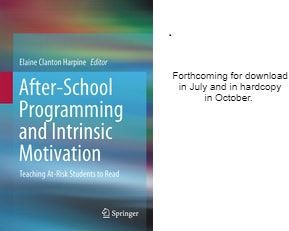We must remember that reading is attached to our “oral language system.” As David Kilpatrick, an educational psychologist from the State University of New York College at Cortland who specializes in working with students with reading difficulties, explains:
- “I believe this assumption that we store words based on visual memory is a major reason why we have widespread reading difficulties in our country. Until we properly understand how to promote permanent word storage, we will continue to have many weak readers…. Orthographic mapping is the mental process we use to permanently store words for immediate, effortless retrieval…. The big discovery regarding orthographic mapping is that this oral “filing system” is the foundation of the “filing system” we use for reading words. We have no 'visual dictionary' for reading that runs alongside our oral dictionary. I suspect that the reason this idea was not obvious to researchers for the last 100 years is simple: speech is auditory and reading is visual. Because reading involves visual input, everyone presumed that it also involved visual storage. However, input and storage are not the same thing…. Mapping must not be confused with phonics. Mapping and phonics differ in some very important ways.” David Kilpatrick in Equipped for Reading Success, pp. 29-39).
As Dr. Kilpatrick states:
- “Understanding why words sound different is phonemic awareness.” (p. 16)
- “… phonemic awareness is not “optional” if one wants to be a good reader.” (p. 16)
- “Phonemic awareness is a linguistic skill that is essential for learning to read. It is different from phonics….” (p. 18)
- “The vast majority of students with word recognition difficulties lack sufficient phonemic awareness.” (p. 35)
I use vowel clustering. My new book (to be released later this summer) documents eight years of research that shows that we have taken students from the public schools who have failed two and sometimes four years under whole language, balanced literacy, one-on-one phonics tutoring, and Reading Recovery. We have had students move up four grade levels in reading in one year through vowel clustering. The actual statistical data analysis for eight years of research is included in the book.
Vowel clustering can be used in the school classroom or as I have done in after-school programs. Why does vowel clustering work where phonics and whole language have failed? Vowel Clustering ties into the “oral language system” that is necessary and used for effective reading.
Research clearly shows that how a child learns, or the method that is used to teach a child to read is just as important as the content contained in the lesson being taught (Chronis-Tuscano et al., 2015). The teaching method used in the classroom is the key to successfully teaching students to read, comprehend, spell, and read fluently. We must remember that reading failure is connected to crime, violence, bullying, academic failure, dropping out of school, and even suicide (see Chapter 1 of my forthcoming new book for details on the mental health dangers of reading failure).
- The National Reading Panel (2000) stated that, “systematic phonics approaches are significantly more effective than non-phonics [whole language] …. However, phonics instruction failed to exert a significant impact on the reading performance of low-achieving readers in 2nd through 6th grades” (p. 94).
The students I work with at my after-school programs are, unfortunately, students who are already failing in reading. To continue to use whole language or even systematic phonics would be a disaster for these students. Phonics simply does not work for all students. We need to face reality.
- As Morgan, Farkas, & Wu (2012) stated: “… poor readers in third grade were about twice as likely to consider themselves as angry, distractible, sad, lonely, and unpopular in fifth grade as those who had not been poor readers in third grade. Being poorly skilled in mathematics increased children’s risk of feeling sad or lonely but not of feeling angry, distractible, or unpopular. The results provide additional empirical evidence that reading failure contributes to generalized socioemotional maladjustment in young children.” (p. 360
Yes, research has shown that students who are failing in reading are more likely to contemplate or even attempt suicide (Daniel & Goldston, 2009). So this is no longer an academic argument over my method is better than your method. This is serious. When the Nation’s Report Card shows that we have 63% of fourth graders failing and unable to read at the fourth-grade level, it’s time that we change to a more effective teaching method than whole language or phonics. We cannot continue to make students fail by clinging to failed teaching methods such as whole language, balanced literacy, phonics, or Reading Recovery. We have neuroimaging research that shows how children can best learn to read.
Yes, we can teach every child to read, we are just not willing to do it.

 RSS Feed
RSS Feed
